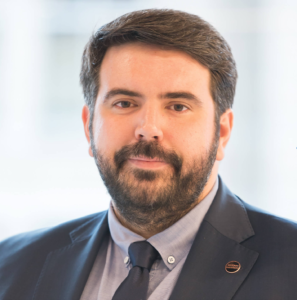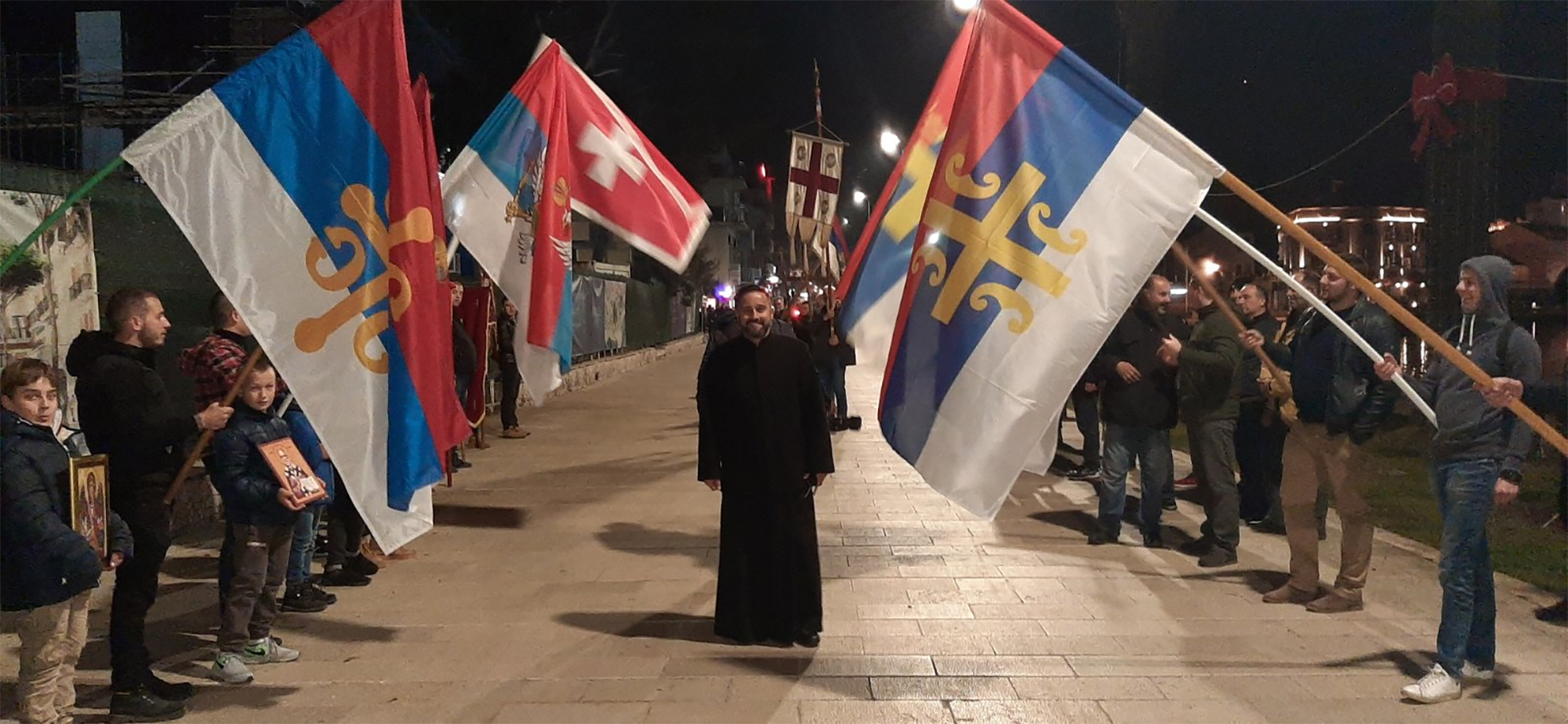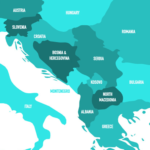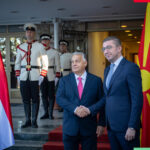Following the political changes in 2020, some citizens of Montenegro began referring to the Serbian Orthodox Church (SOC) as the “Church of Serbia” to emphasize its role as an instrument of Serbia’s foreign policy. The SOC, much like the Russian Orthodox Church (ROC), serves as an informal institution of the state and an extension of state actions. Sometimes, it is unclear where the church ends and the state begins, and vice versa.
Moreover, the SOC is an institution of Serbian nationalism, which often manifests in an aggressive form of ethnic nationalism that is discriminatory regarding both ethnicity and religion.
After 2020, Montenegro fell under the strong influence of the SOC, meaning that the indirect influence of Serbia and Russia in the country has increased.
Evidence of this includes the rise of nationalist organizations, mutual support between Russian and Serbian ambassadors and the SOC, and frequent demonstrations of support for Russia orchestrated by senior officials of the Serbian Orthodox Church in Montenegro, particularly the Diocese of Budimlja-Nikšić, led by Bishop Metodije (Ostojić).
The Serbian Church in Montenegro is structured differently from the Russian Church in Ukraine. In Montenegro, the SOC lacks a centralized and hierarchical structure. There is no Montenegrin Orthodox Church within the Serbian Church, neither in form nor in substance, as was the case with the so-called Ukrainian Orthodox Church in Ukraine. Four dioceses operate on Montenegrin territory. Of these, two are led from within Montenegro, while the other two are headquartered in Serbia and the Republika Srpska entity in Bosnia and Herzegovina.
The southern half of Montenegro is overseen by a metropolitan who resides in the old royal capital of Cetinje, while the aforementioned Metodije leads the north.
Recently, Metodije exerted pressure on the Montenegrin Minister of Culture to reverse an initial negative decision and allow the city of Kolašin to erect a monument to Amfilohije, the late metropolitan of the Serbian Church in Montenegro.
Amfilohije was the sovereign leader of the Serbian Church in Montenegro, and his personal authority allowed the Church of Serbia in Montenegro to behave autonomously and act independently from the SOC HQ in Belgrade. This was not in Montenegro’s best interest, as this autonomy was often used to lead and promote Serbian nationalism, especially during the 1990s.
Amfilohije led the protest movement in 2020 and made a critical contribution to the change of government in Montenegro. He was supported by the Russian Metropolitan in Ukraine, Onufriy, who came to Montenegro during the protests and participated in them.
During these protests, Montenegro faced intense pressure from Serbia and Russia. Media, social, and security challenges inspired by these two countries resulted in a mass protest movement aimed at preventing the return of ownership of churches and temples to state control, as had been the case before 1918. This move by the government was intended to weaken the influence of the Serbian Orthodox Church (SPC) and open the door to strengthening the structure of the Montenegrin Orthodox Church, which, unlike the SPC, is loyal to Montenegro.
The protests took the form of religious rituals, with processions carrying icons in full ecclesiastical choreography, organized twice weekly. These protests coincided with the election campaign, and the church was actively involved in it.
The new government was formed through an agreement in a monastery in Montenegro, led by Metropolitan Amfilohije. The new prime minister, ministers of education and justice, and the head of the National Security Agency were chosen from Amfilohije’s closest associates and friends.
Since then, two governments have changed, and the political landscape looks different in terms of personnel, but the ruling ideology remains strongly influenced by the SPC.
Evidence of this is the fact that the Montenegrin government is now granting approval for the erection of a monument to a Serbian church leader in the city of Berane, financed by the city administration and public funds.
This is not a spiritual but a political act, signaling support for the politics and political engagement of the late Serbian metropolitan. What were his politics like?
The best answer to that comes from the reactions of minority parties in Montenegro, who paradoxically participate in the ruling coalition. Albanian and Bosniak politicians condemned this move, recalling the hate speech and discrimination that Amfilohije espoused in his public statements, particularly against Muslim Albanians and Bosniaks.
Amfilohije denied the existence of a distinct Montenegrin nation and identity, often using offensive and derogatory language to belittle Montenegrins who did not identify as Serbs. He referred to the Montenegrin nation as a communist invention and called Montenegrins the “bastards of Milovan Djilas” (the Yugoslav communist leader and later dissident).
Amfilohije was also known for his support and advocacy of convicted war criminals. During the 1990s, he hosted paramilitary units led by the notorious Željko Ražnatović Arkan in Cetinje, and he declared Radovan Karadžić and Ratko Mladić as heroes.
He criticized the Serbian government for “yielding” to Kosovo and issued curses and threats against those who did not support Russia. He was an advocate of anti-Western views and compared NATO to Nazi Germany.
Now, the Montenegrin government is erecting a monument to a figure with such a background, and its leaders are promoting Amfilohije as an example of character leadership.
This is the reality of Montenegro today.
Such government policies significantly undermine social cohesion in Montenegro, as the country is home to a multiethnic and multiconfessional society. By eroding secularism in this way, a time bomb is being placed at the foundation of Montenegrin statehood and sovereignty.
In addition to this decision, leaders of the ruling majority are announcing plans to build a church on the summit of Mount Lovćen, a site of symbolic importance in the Montenegrin national mythology.
Furthermore, efforts are underway to introduce dual citizenship with the aim of integrating a large number of Serbian citizens into Montenegro’s political system.
These actions are laying the groundwork for a long-term change to the Montenegrin constitution. All of this leads to a loss of independence and the subjugation of Montenegro to Serbia in the long term. These are the overt and undisguised political goals of Serbian nationalist policies and the Serbian Church in Montenegro.
This policy is damaging Montenegro’s relations with other countries in the region, particularly with Croatia and Kosovo. Deteriorating relations with Croatia threaten to jeopardize Montenegro’s path toward EU membership, something the authorities in Belgrade would welcome.
Just as Putin does not want to see a prosperous Ukraine, because such a Ukraine could threaten his rule in Russia, similarly Aleksandar Vučić refuses to allow Montenegro to join the EU before Serbia.
The articles published in the “Opinions” column reflect the personal opinion of the author and may not coincide with the position of the Center
Ljubomir Filipović. Montenegrin political scientist




